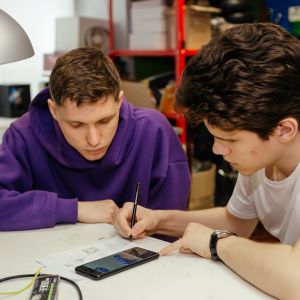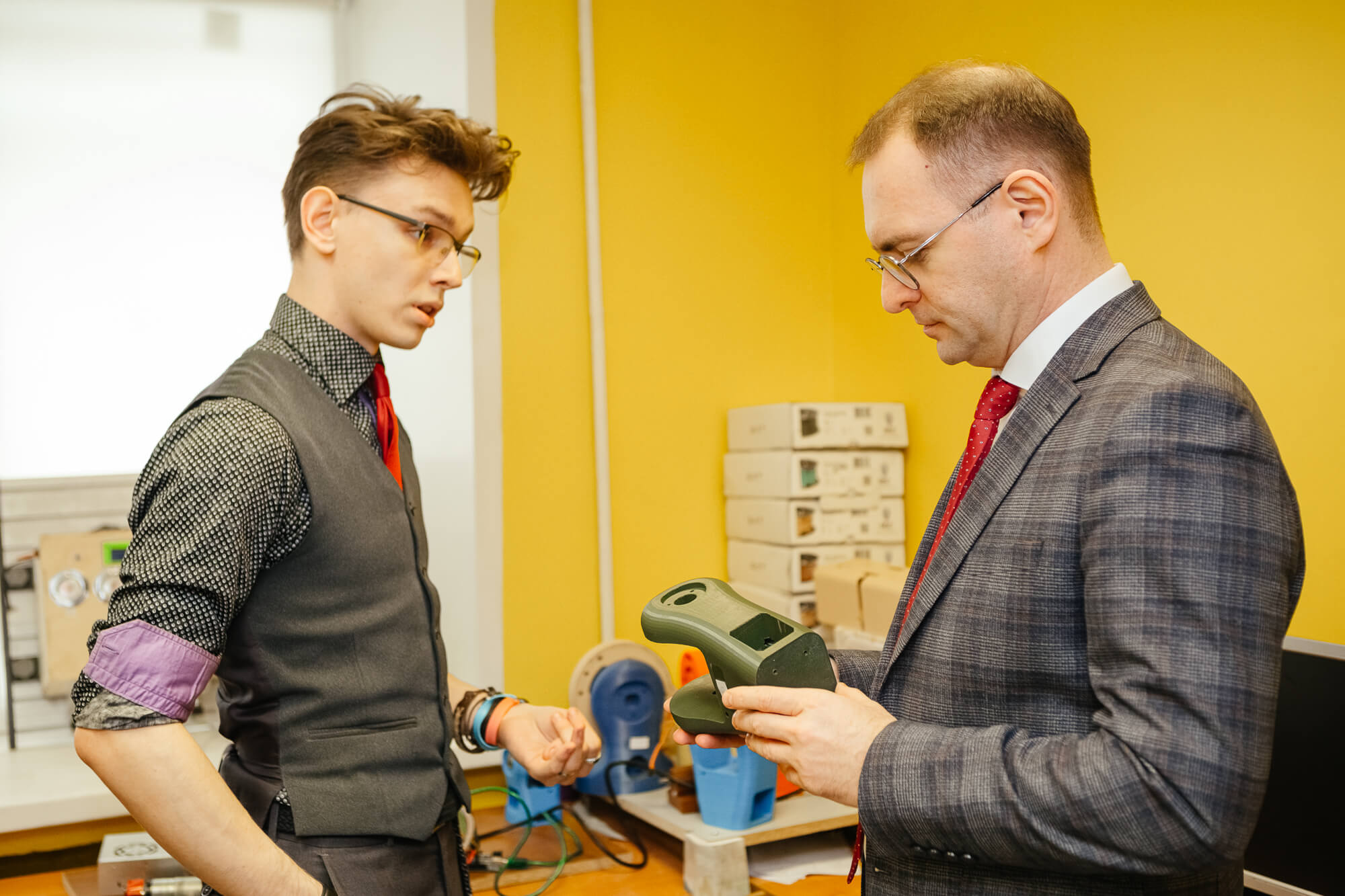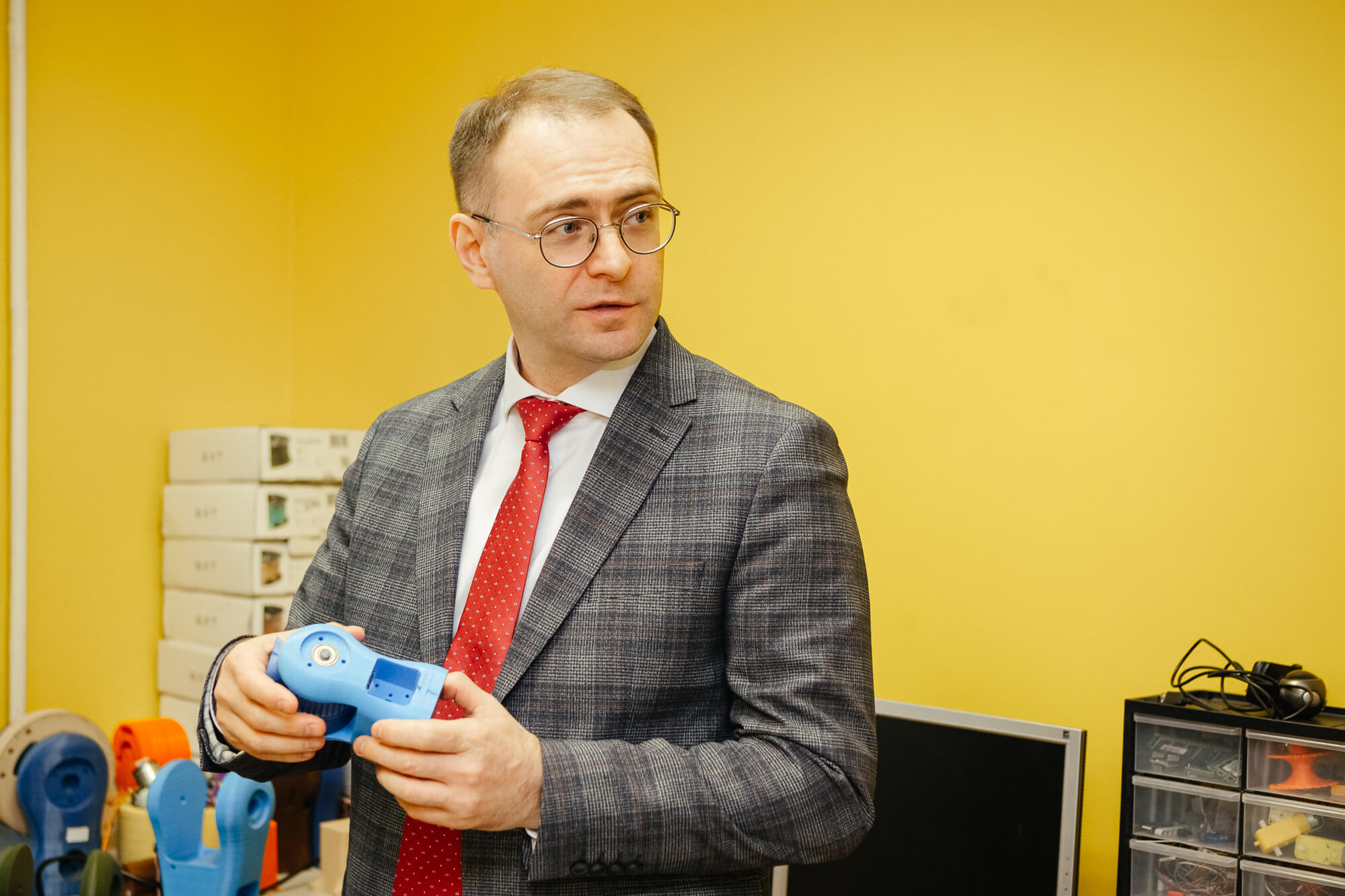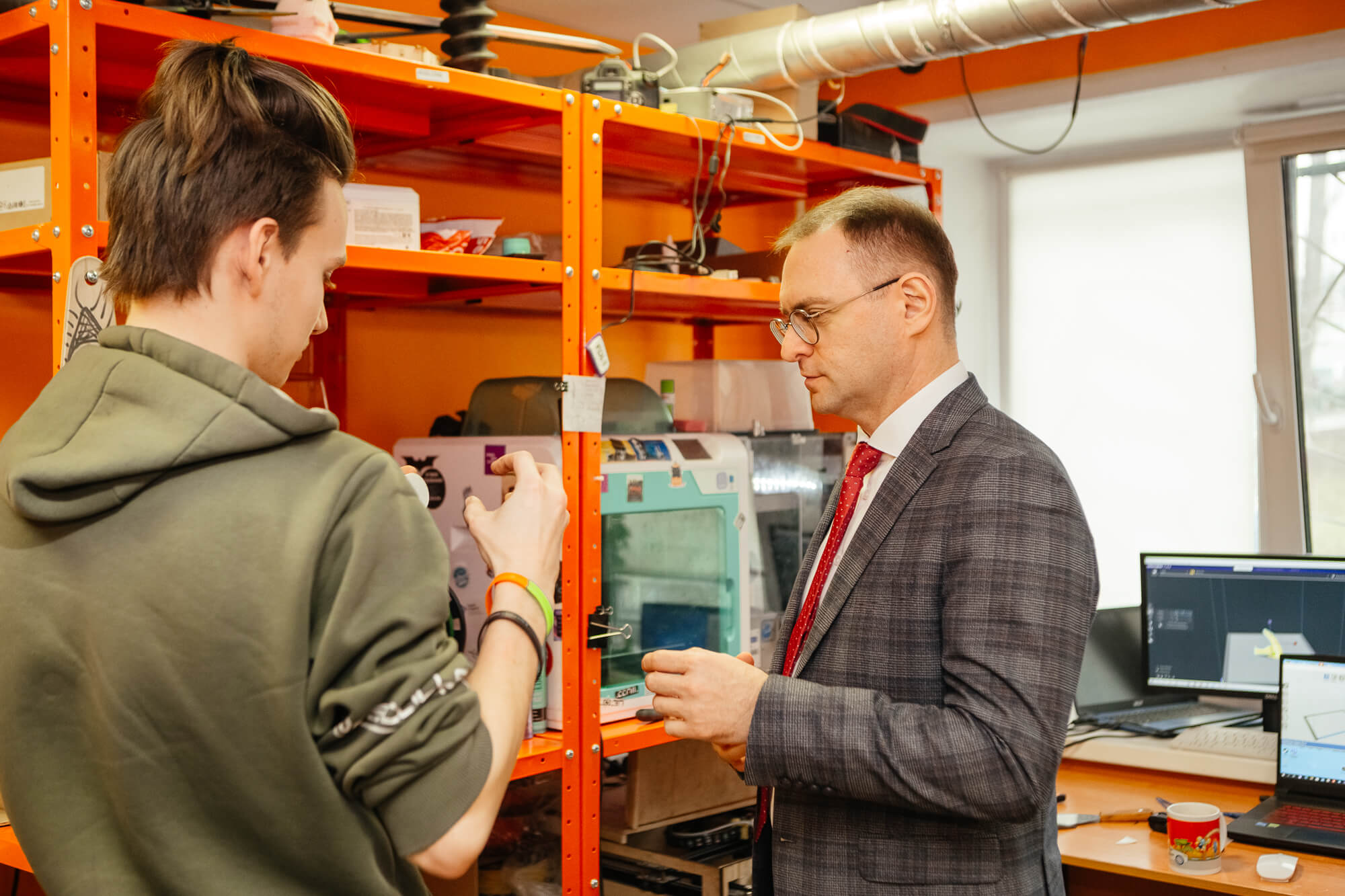Rector Vladimir Bogatyrev met with members of the Robotiс student association. Club representatives Sergey Gudkov and Dmitry Mezentsev demonstrated the association’s infrastructure and spoke about current and future projects.
Robotiс is an association with a long history. The robotics club has been developing at Samara University since 2010. With a current membership of 120 future robot masters, it pursues a range of areas from underwater technology to intelligent assistants.
The club’s enthusiasts have set up a powerful testing ground, which is used to test robots of various designs in the Russian RTC Cup competition. The Samara testing ground has such unique sections as airlock and strobe lights.
The workshops offer free access to a variety of tools; there are soldering points for electronic circuit boards, and machines – a band saw, a drill and a grinder.
An entire room is dedicated to 3D printing. Several printers work here almost non-stop. If any printer part fails, its neighbor prints a replacement. The students refer to this space as “CNC lounge”. The main task of this sector is to bring the laser cutter into operation. The Rector promised to engage the University services in the connection – the building needs to be earthed and the wiring needs to be reinforced.
In adjoining classrooms, young people discuss the implementation of ongoing projects. The Rector praised a joint development by University and school students – a ventilator.
“We are in the process of developing our own manipulator – essentially a conventional gripper arm. We print the parts on a 3D printer. It will be used as a training bench, so we will have to calculate the inverse and forward kinematics. We want to do everything inhouse and test it. There are only a few manufacturers of such mechatronic devices in Russia,” said Sergei Gudkov, adding, “Here is an example of the students’ creativity: the Illuminated Cloud with electronics, mechatronics and programming. It is an aspiring project with marketing prospects: visualization of weather and a decorative interior element.”
The club members introduced the Rector to the new projects of the association. So, Mikhail Khanov is working on the GLADOS project, an intelligent voice assistant that will move around on rails mounted on the ceiling of the laboratory.
“Not only large corporations can create such systems,” says Sergei Gudkov. “Students can do similar things, albeit on a smaller scale. The club is a team of proactive people who want to pursue projects of the kind. A special feature of the project is that our assistant will not just be a voice speaker, but a mechanized model that will be able to watch, listen and move around on the ceiling. The robot will be able to perceive and perform basic secretarial functions: maintain schedules and task lists, send notifications, do searches and much more.”
Another new club project is the AURA cleaning robot. The students are now busy designing the frame and the turbine. The robot will move around the campus on its own, autonomously performing cleaning tasks without disturbing people, and working without a charge for up to four hours.
Developments are also underway in the field of underwater robotics. The students are building an autonomous underwater research robot that will assume the task of monitoring inland waters. The device will be equipped with GPS and GLONASS receivers to determine coordinates and plot a route. Sonar, gyroscope and accelerometer will be used for orientation in the water. Using a built-in microcomputer, the robot will receive and process data from a sonar and GPS tracker. The embedded artificial intelligence will help it navigate the water quickly and efficiently and to avoid obstacles. The research will be carried out using sensors – a pH-meter, a turbidity meter, a temperature sensor, a background dosimeter, an oxygen saturation sensor.
But the main focus of the student’s current efforts is designing and building a robot to take part in the All-Russian Battle of Robots championship. The Samara University team will represent the region at these competitions. A total of 48 teams from 48 regions create the robots.
An untrivial task; at least, the University club residents have never tried themselves at it before. The structure of the future fighter must consist of at least 50 % metal, weigh at least 110 kg, be equipped with weapons, and be controlled remotely.
“This robot is vastly different from what we have encountered before,” admits Dmitry Mezentsev. “We need to design the most powerful robot that will be equipped with defense and attack tools. For example, it is unquestionably more powerful than those we are used to. Even though we only found out about the task a week ago, I’m sure we can handle it!”
The Rector was introduced to the team. It included Dmitry Mezentsev, Sergei Gudkov, Nikolai Kozlov, Danila Funin and Mikhail Khanov. The team is supervised by Kirill Mitkovsky, the University graduate. The team manager is Denis Orlov from Extra-Curricular Activities Office. The students told that AVTOVAZ was ready to become the team’s industrial partner. The battle will take place as early as June this year. The students are confident that Samara’s Dusya 3.0 will definitely enter the ring.
Vladimir Bogatyrev said that developing Dusya and setting up a training ground for her is a priority. He promised the students his full support for the project.
“I really hope that our University will do well in this competition,” stressed the Rector. “The club’s laboratories are perfectly equipped. It is important that you do not work autonomously, but build cooperation with other divisions of the University – the Engineering Centre, the Institute of Artificial Intelligence. We will try to solve the issues of connecting laser equipment, as well as find a place for Dusya’s training ground.”
Photo: Olesya Orina






